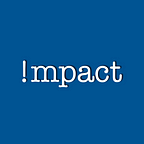Beneath the complex interconnected system of the U.S. energy grid lies a disconcerting reality — a substantial segment of this infrastructure has aged and is exposed to vulnerabilities. In fact, more than 70% of the grid has served the nation for over 25 years. Add in the growing demand for clean energy sources, such as wind and solar, and the call for a comprehensive overhaul takes on a true sense of urgency. According to the U.S. Energy Information Administration’s Annual Energy Outlook 2023, the power grid will nearly double in capacity from 2022 to 2050 and most will be from renewable energy technologies.
A telling indicator of the current grid’s aging infrastructure can be found in the data on power outages in the United States. According to the U.S. Energy Information Administration, the average outage duration for U.S. electricity customers exceeded seven hours in 2021, with more than five of those hours attributed to major weather events such as snowstorms, hurricanes, and wildfires.
In the aftermath of Hurricane Maria in 2018, our focus turned toward Puerto Rico’s recovery and the formidable task of reestablishing its energy grid. At that time, I pointed out that there was a limited window for global leaders to foster the development of an intelligent and sustainable energy storage framework. This vision remains unrealized. In the interim, our vulnerability to the impact of extreme weather persists, as evidenced by events such as Hurricane Ida and the 2021 Texas Freeze.
Of significant concern is the substantial cost associated with replacing the aging systems, currently estimated at approximately $10 billion per year. In addition, there is a geographical challenge to address: traditional fossil fuels, like oil, coal, and natural gas, are conventionally transported by railroads or pipelines and then combusted in power plants located near urban centers. In contrast, clean energy sources, such as wind and solar, are devoid of greenhouse gas emissions but require the transfer of energy from regions with abundant wind and sunlight with the consumption hubs. In other words, to fully harness the potential of clean energy, we must extend the grid.
The cost and geographical challenges associated with this transformation are substantial, but they must not deter us from the path to a sustainable future. In order to meet the 2050 goals, we need to create a comprehensive plan that encompasses the entire spectrum of energy production and distribution, from vision inception all the way through to successful implementation.
This plan begins with establishing clear goals and strategies for integrating clean energy and modernizing infrastructure. Subsequently, the focus shifts to resource collection, ensuring access to sustainable energy sources, and overcoming storage and distribution challenges. The product development phase leverages technology and innovation to create necessary tools and systems. The final aspect of this plan is the realization of the updated grid. In essence, we require a holistic approach that covers every aspect of the rollout.
Collaboration between corporations, cities, and states holds the key to unlocking the potential of a sustainable energy future. It is through this collective effort that we hold the key to unlocking the potential of a sustainable energy future, ensuring resilience and reliability for generations to come.
With over 25 years in corporate America, Lisa Salley has a strong track record of driving transformation and change on a global level. Passionate about strategic growth, innovation, and emerging technology, she has specialized in the energy and environmental markets. Her extensive experience ranges from start-ups to Fortune 50 companies and she has received repeated recognition for her leadership and execution abilities. As a P&L leader, she has managed multi-metric improvement year after year. Through a holistic approach that emphasizes community engagement and fosters a robust STEM talent pipeline, her mission is to enable a sustainable future, where an emphasis on clean energy takes center stage.
Connect with me on LinkedIn
